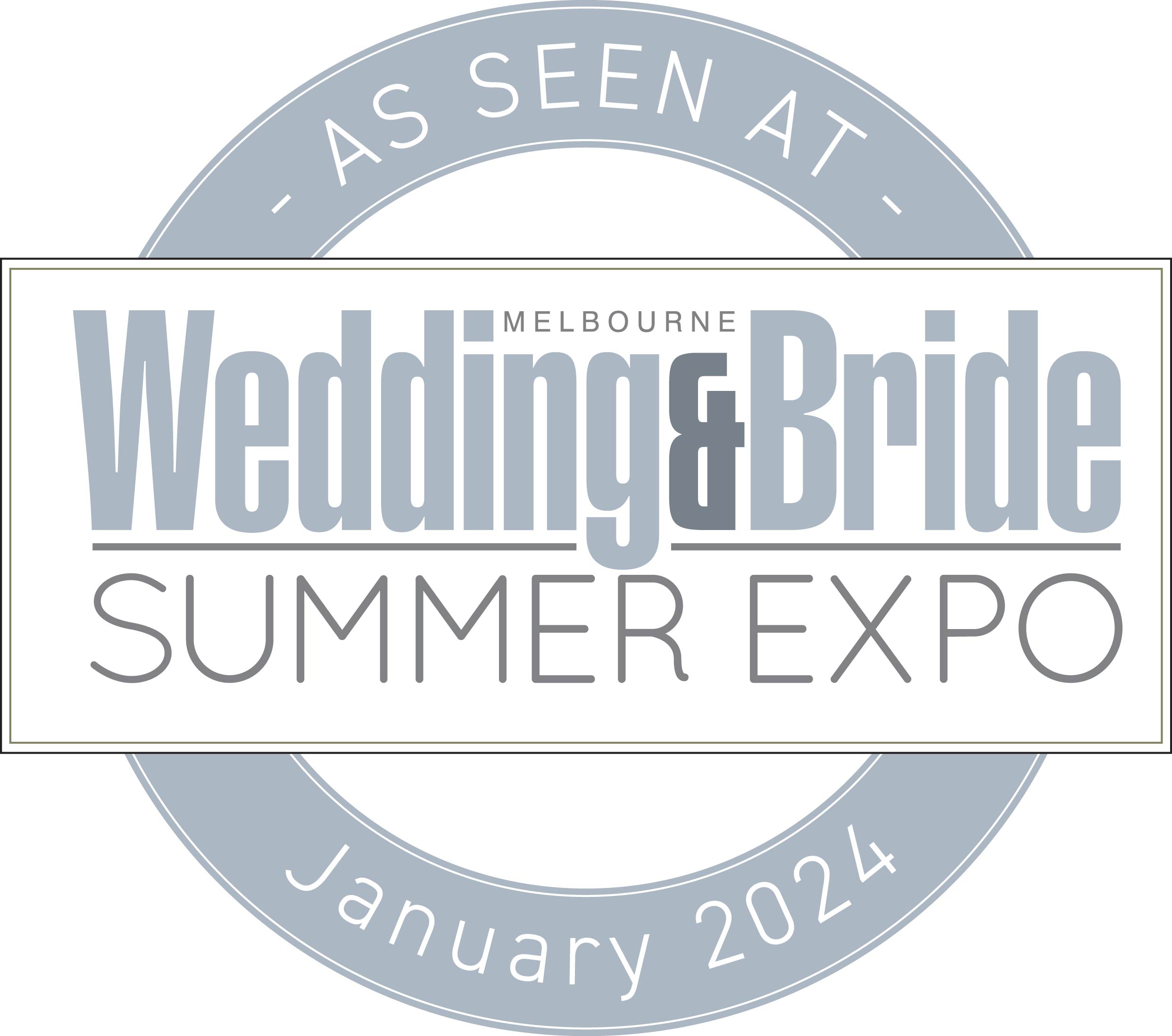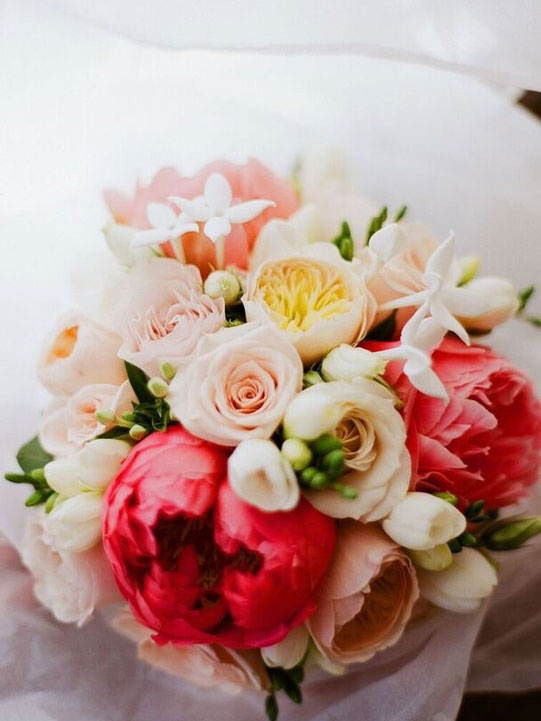Pinkie
Promise
As 2018 drew to a close, designers and influencers alike pondered what fresh ideas the new year would bring. Direction seemed to manifest in late December as the hotly anticipated Pantone Colour of the Year was pronounced to be Living Coral, a vivacious yet soft hue with golden undertones. Read ahead as Jacinta Walsh speaks with florist Basia Puchalski to discuss the ways in which brides can incorporate this charming colour into their floral arrangements.
Image Credit: Qlix Photography
Inspired by the vibrant yet elusive coral reefs, Living Coral embodies a sense of warmth and nourishment to comfort us in our evolving society. Selected in direct response to the hyperdigitalised culture in which we live, the chosen colour encourages authentic and immersive experiences.
Couples are seeking these ‘authentic’ and ‘immersive’ experiences for their wedding day more than ever, reflected in the rise of the ‘unplugged’ wedding trend, which sees guests switching off their devices, as well as the fact that more couples are negating religious or customary traditions in favour of new world ideals. As such, it’s no wonder why they have connected with the humanising hue and are embracing it within their wedding colour schemes.
Flowers are an indulgent, yet some would say necessary, inclusion in your wedding preparations. They set the overall tone for your nuptials and will breathe life into even the simplest of spaces. Bright or subdued, coral-like colours can be used to great effect in various floral arrangements. Here, florist Basia Puchalski shares her advice on how best to hero this pink pigment to ensure your wedding blooms are anything but garden variety.
On Trends, We Depend
Selecting the colour of the year requires careful thought, as well as trend analysis across myriad design-influenced industries, including fashion, film, interior design and art – to name but a few. As consumers and producers share in a dynamic interplay, trends begin to emerge.
What was once industry-led has now spilled into the public subconscious, whether they are aware of it or not, and creatives are beginning to cotton on. “I’ve definitely noticed the influence that Pantone has had on the colours used in brides’ arrangements,” Puchalski says.
“Over the past few years I have created a lot of marsala-inspired bouquets, while the last year or so has seen a lot of greenery.” Marsala and Greenery also earned the title of Colour of the Year in 2015 and 2017, respectively.
While classic colours like pink, red and white will always be mainstays for wedding flora, Puchalski thinks that it’s important for florists to stay ahead of the game when it comes to incorporating unconventional blooms into their bouquets. “Like fashion, flowers go through trends as well,” she says. “Alongside coral, coffee-coloured flowers are also having a moment, while single-variety and asymmetrical bouquets are becoming a frequent request.” Though it isn’t just the latest trends that influence how couples choose to style their floral arrangements. There will always be other considerations, such as the look of your venue, personal taste and seasonal limitations. “Bridesmaid dresses will also influence the colours of the bouquets,” she says.
A Rose By Any Other Name
When curating your floral arrangements, it pays to do your research. Getting to know the difference between a David Austen and a damask rose, as well as which season to expect your buds to be in full bloom, will put you in good stead when meeting with your florist. It’s also pertinent to arrive with a colour scheme in mind.
“Coral-inspired flowers can be incorporated into all wedding themes, whether it’s modern, romantic or whimsical,” Puchalski says. “Roses are always popular as they come in so many different colours,” she says. “Then there are the seasonal favourites like dahlias, peonies and ranunculus, which are available in spring and summer in gorgeous coral-like colours.”
Think beyond your bouquet to inform how you will dress your venue.
“Arbours, arches and freestanding tall arrangements are popular backdrops for the ceremony, as well as fuller flower walls for photographs afterwards,” Puchalski says. Flowers are also a great way to finish your cake, particularly rustic-inspired creations.
Bloom For You
To bring poise to your posy, it’s essential to balance your colour scheme. “Whites and greens work well [aside coral flowers], as do other pastel colours such as pale pinks, yellows and oranges,” Puchalski says. Playing with different textures will also create depth and distinct visual appeal; think banksias, proteas and dusty miller. It’s also essential to think about the overall shape of your bouquet and arrangements. Cascading bouquets will look great in your wedding snaps, while stems of differing lengths placed sporadically will add a theatrical touch to table settings.
Dyed foliage can also add an intriguing element to your arrangements and produce a tonal effect that is looking increasingly more popular. “Using large blooms like dahlias and peonies will also create a striking feature within the bouquet,” Puchalski says.
When it comes to selecting your flowers for your wedding day, Puchalski suggests keeping an open mind. “Don’t focus on a particular flower, as they are seasonal and may not be available at the time of your wedding.” Instead, think about the overall look you wish to achieve and go from there; different types of flowers can often achieve a similar aesthetic. Allow the relationship with your florist to blossom and remember that regardless of whether or not you choose to follow trends, staying true to your style has never smelled so sweet.

